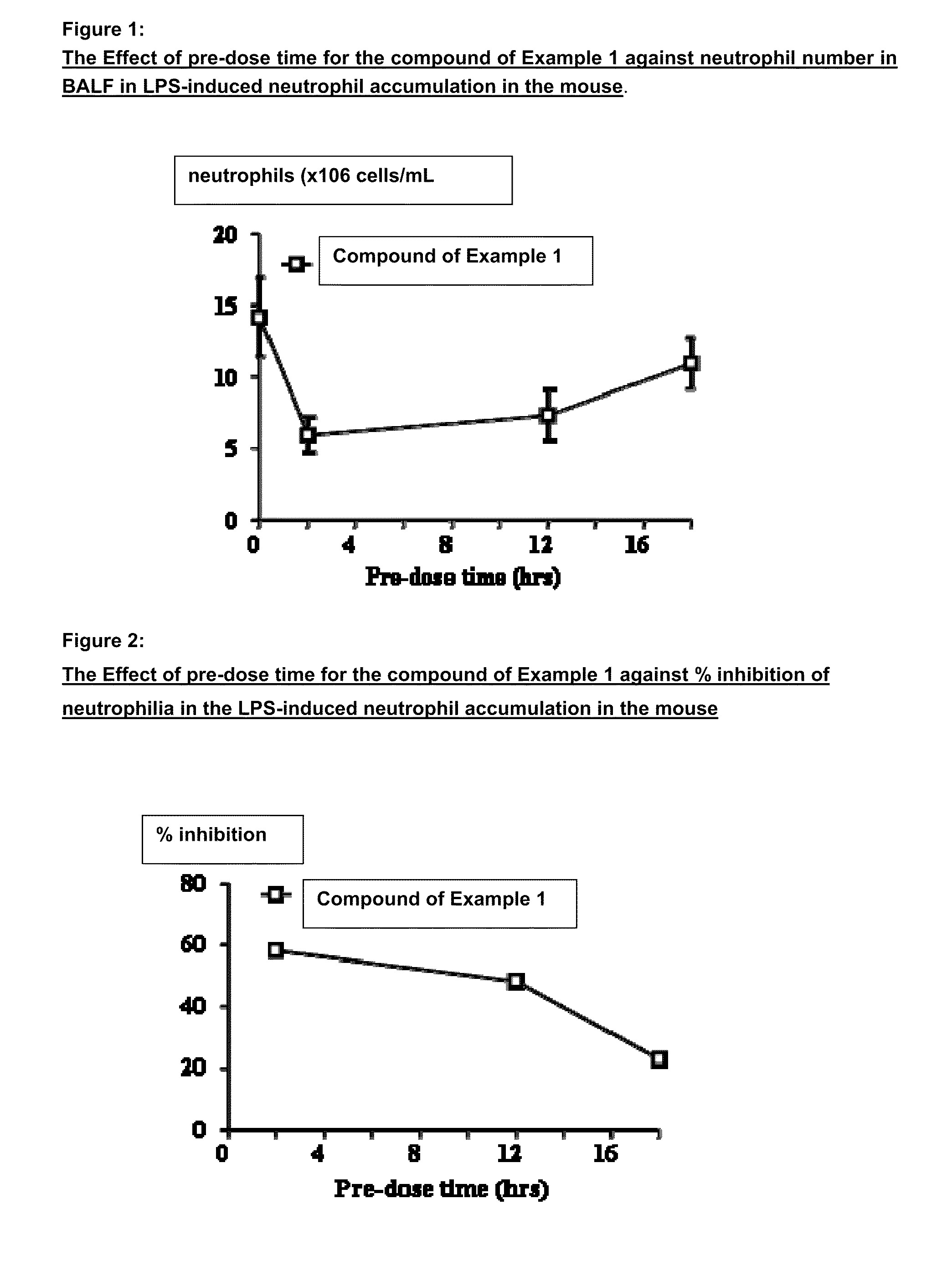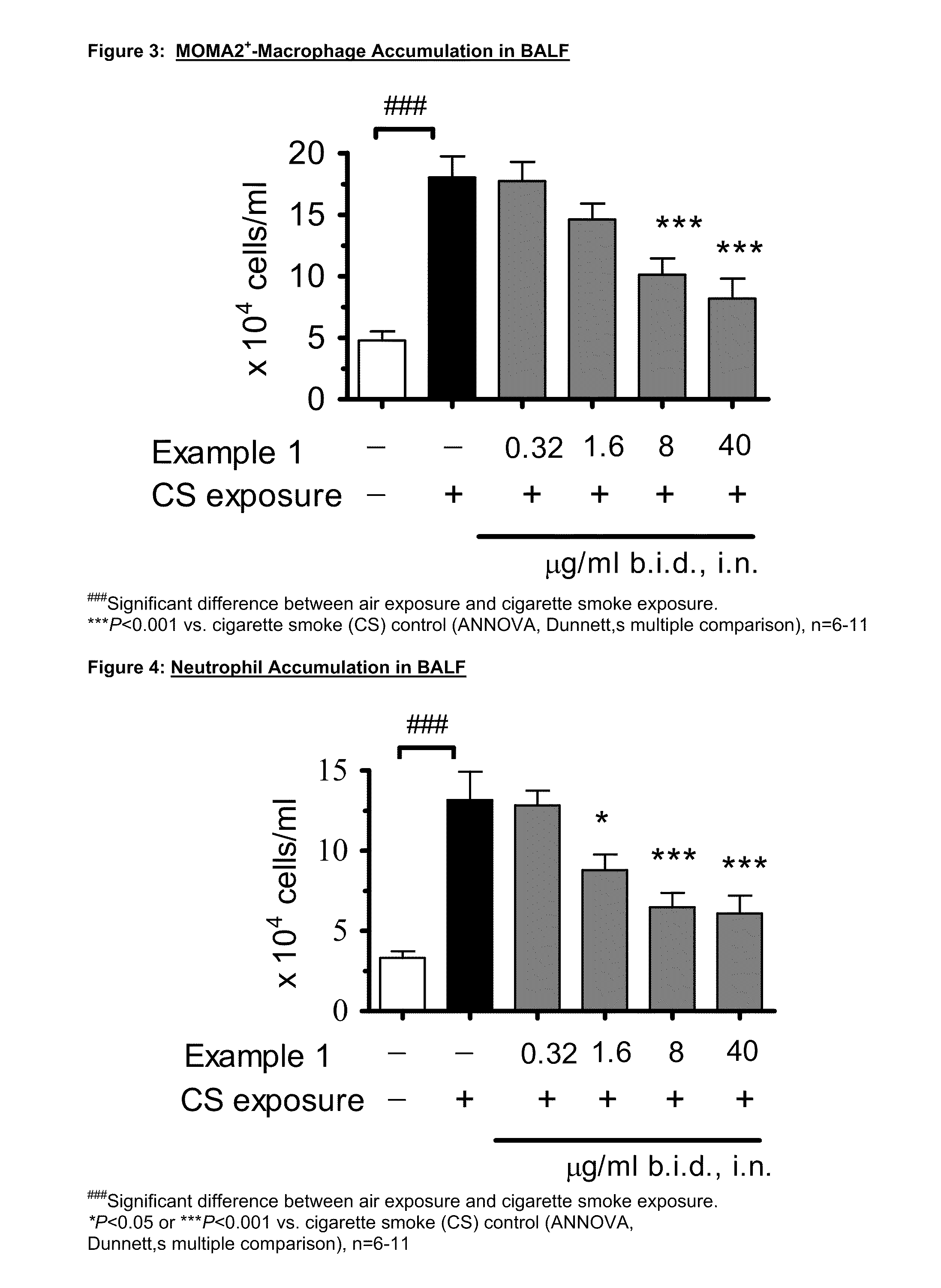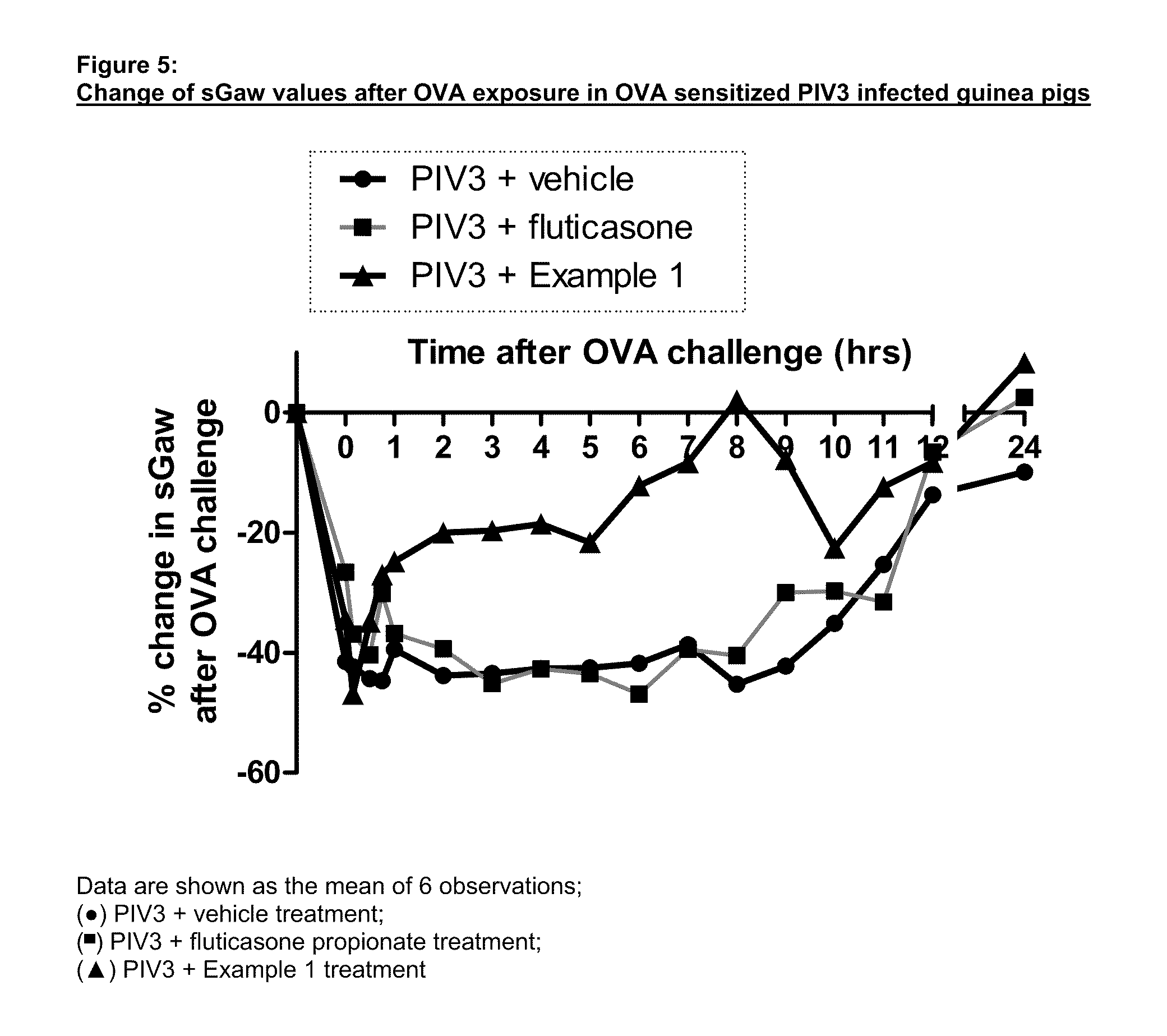P38 map kinase inhibitors
a kinase inhibitor and map technology, applied in the field can solve the problems of affecting the utility of p38 map kinase inhibitors in the treatment of human chronic inflammatory diseases, impairing the phosphorylation of p38 mapks or jnks, and early generations of compounds were highly toxi
- Summary
- Abstract
- Description
- Claims
- Application Information
AI Technical Summary
Problems solved by technology
Method used
Image
Examples
example 1
N-(4-((4-(3-(3-tert-Butyl-1-p-tolyl-1H-pyrazol-5-yl)ureido)naphthalen-1-yloxy)methyl)pyridin-2-yl)-2-methoxyacetamide
[0547]
[0548]To a mixture of Intermediate A (526 mg, 0.96 mmol) and DIPEA (184 μL, 1.06 mmol) in DCM / DMF (10:1, 11 mL) was added methoxyacetyl chloride (92 μL, 1.01 mmol). After stirring for 1 hr at RT, further DIPEA (184 μL, 1.06 mmol) and methoxyacetyl chloride (92 μL, 1.01 mmol) were added sequentially and stirring was continued for 1 hr. After the addition of a solution of 1% NH3 in MeOH (40 mL), the mixture was stirred for 15 min and evaporated in vacuo. The crude product was purified by column chromatography (40 g); eluting with 0 to 6% MeOH in DCM to furnish the title compound (Example 1) as a white solid (286 mg, 49%): m / z 593 (M+H)+ (ES+). 1H NMR (400 MHz, DMSO-d6) δ: 1.27 (9H, s), 2.39 (3H, s), 3.32 (3H, s), 4.08 (2H, s), 5.39 (2H, s), 6.36 (1H, s), 7.03 (1H, d), 7.28 (1H, dd), 7.36 (2H, m), 7.44 (2H, m), 7.56-7.64 (3H, m), 7.93 (1H, m), 8.30-8.35 (3H, m), 8....
example 2
Methyl 4-((4-(3-(3-tert-butyl-1-p-tolyl-1H-pyrazol-5-yl)ureido)naphthalen-1-yloxy)methyl)pyridin-2-ylurea
[0549]
[0550]To a solution of Intermediate A (70 mg, 0.13 mmol) in anhydrous pyridine (1.5 mL) was added methyl isocyanate (14 μL, 0.24 mmol) and the mixture allowed to stir at RT for 72 hr. Pyridine was removed in vacuo and the residue triturated with DCM (3.0 mL). Filtration afforded the title compound (Example 2) as an off-white powder, (36 mg, 45%): m / z 578 (M+H)+ (ES+). 1H NMR (400 MHz, DMSO-d6) δ: 1.27 (9H, s), 2.39 (3H, s), 2.74 (3H, d), 5.30 (2H, s), 6.36 (1H, s), 6.99 (1H, d), 7.05 (d, 1H), 7.35, (2H, d), 7.44 (2H, d), 7.54-7.64 (4H, m), 7.93 (1H, d), 8.19 (1H, d), 8.23 (1H, brs), 8.35 (1H, d), 8.58 (1H, s), 8.79 (1H, s), 9.36 (1H, s).
example 3
N-(4-((4-(3-(3-tert-Butyl-1-p-tolyl-1H-pyrazol-5-yl)ureido)naphthalen-1-yloxy)methyl)pyridin-2-yl)tetrahydro-2H-pyran-4-carboxamide
[0551]
[0552]Neat DMF (2 drops) was added to a stirred solution of tetrahydropyran-2H-4-carboxylic acid and oxalyl chloride (21 μL, 0.25 mmol) in DCM (1.0 mL) and the resulting solution was stirred at RT for 1 hr. The solution was evaporated in vacuo to give a colourless oil, which was redissolved in DCM (1.0 mL) and added dropwise to a stirred mixture of Intermediate A (50 mg, 0.10 mmol) and DIPEA (84 μL, 0.50 mmol) in DCM (1.0 mL). Stirring was continued for 18 hr. The reaction mixture was stirred in 1% NH3 in MeOH (20 mL) for 30 mins, evaporated in vacuo, pre-adsorbed on silica, and purified by column chromatography (12 g, 0-5% MeOH in DCM, gradient elution) to give the title compound (Example 3) as a light tan solid (18 mg, 28%): m / z 633 (M+H)+ (ES+). 1H NMR (400 MHz, DMSO-d6) δ: 1.26 (9H, s), 1.57-1.72 (4H, m), 2.38 (3H, s), 2.75 (1H, m), 3.28-3.33 (...
PUM
| Property | Measurement | Unit |
|---|---|---|
| temperature | aaaaa | aaaaa |
| mass mean diameter | aaaaa | aaaaa |
| mass mean diameter | aaaaa | aaaaa |
Abstract
Description
Claims
Application Information
 Login to View More
Login to View More - R&D
- Intellectual Property
- Life Sciences
- Materials
- Tech Scout
- Unparalleled Data Quality
- Higher Quality Content
- 60% Fewer Hallucinations
Browse by: Latest US Patents, China's latest patents, Technical Efficacy Thesaurus, Application Domain, Technology Topic, Popular Technical Reports.
© 2025 PatSnap. All rights reserved.Legal|Privacy policy|Modern Slavery Act Transparency Statement|Sitemap|About US| Contact US: help@patsnap.com



